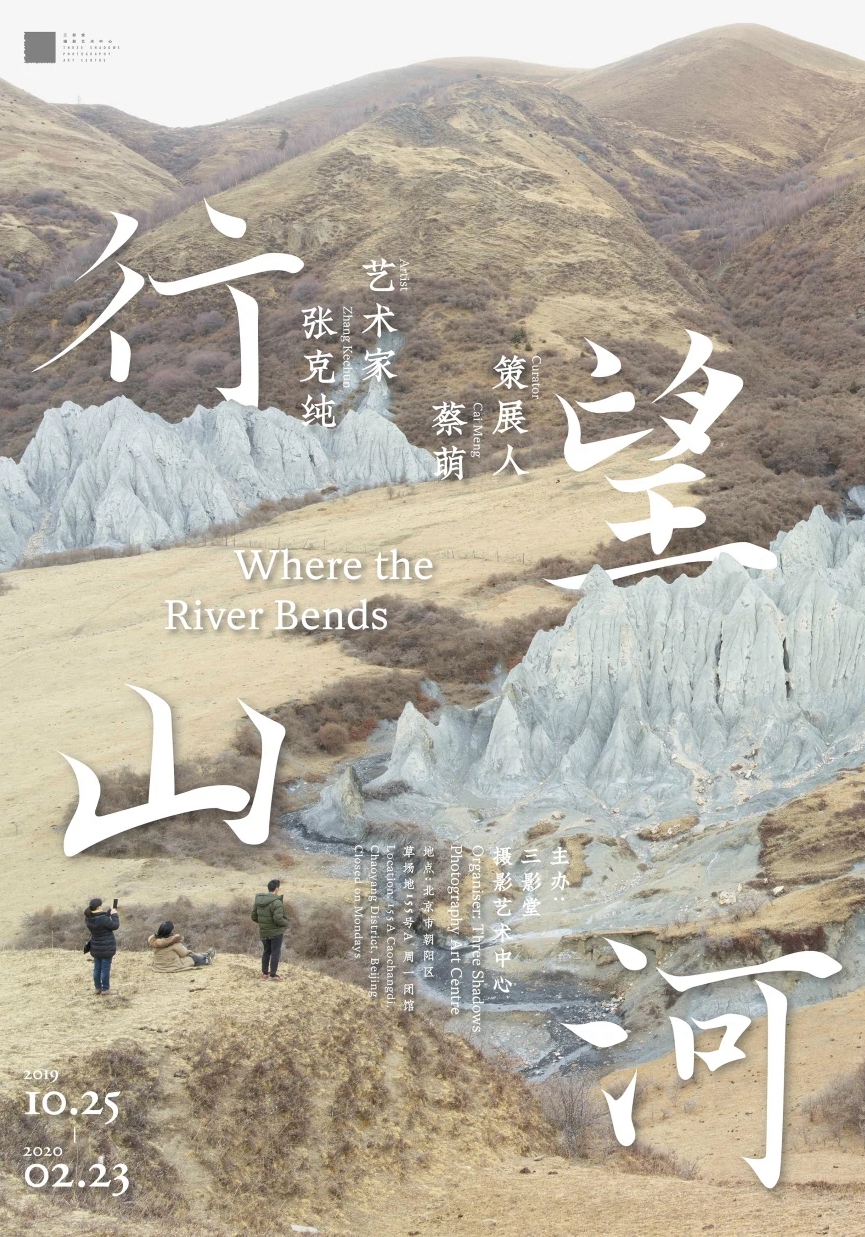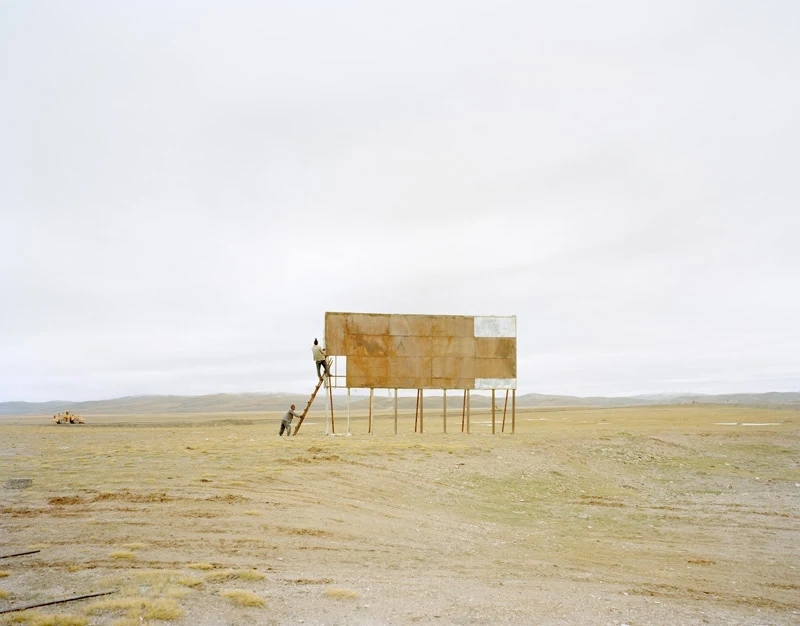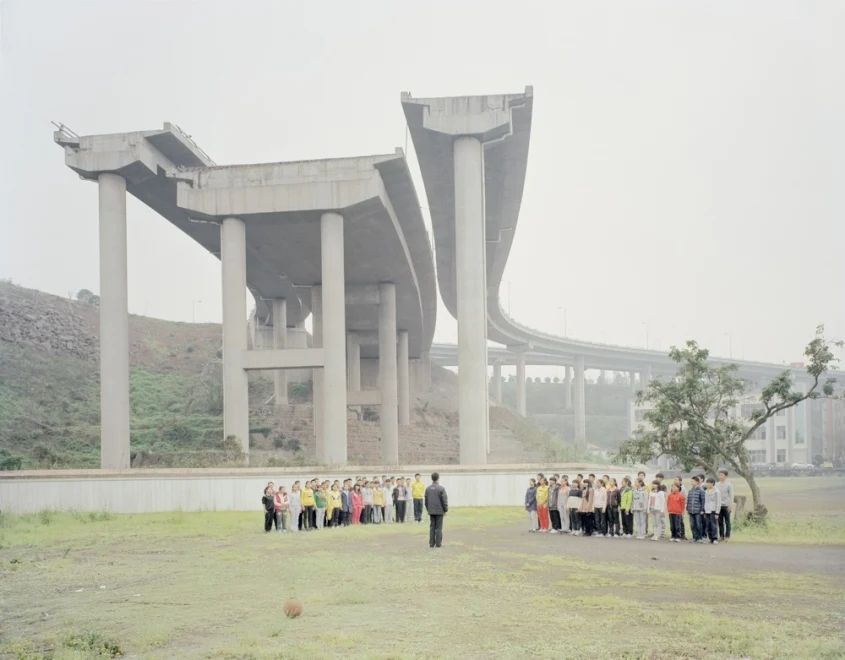
Wandering and Enjoying the Mountains and Rivers: On Zhang Kechun’s Photography
Text/Cai Meng
Travelers among the Mountains and Streams is widely considered to be an authentic work by Fan Kuan. The dignified mountains dominate this large Northern Song painting, which has the cool, other-worldly, and lofty spirit of Song-era landscapes. A group of travelers moves through the forest at the base of the mountain, and the proportional relationships between the figures and the landscape have deeply influenced Zhang Kechun’s photographs. However, this is just one element in his photography.
In the last ten years,there have been two notable phenomena in Chinese contemporary photography: one is the spread of landscape photography (jingguan sheying) and the second is the rise of photography’s “Sichuan army.” Zhang Kechun lies at the intersection of these two phenomena. Many essays have explored this mode of landscape photography, so I won’t add to the discussion here. The “Sichuan army” is a group of young photographers who live and work in modern cities with history, culture, and comfort, located in China’s southwest, centered on Chengdu. A disruptive force, they have repeatedly won important photography prizes both in China and abroad. In organizing and curating the Zong Mu Photography Biennial Exhibition, they have actively participated and intervened in public social events. In the new era, people from Sichuan have demonstrated a unique ability to stick together, which has shaped a new order; this new group in the development of Chinese contemporary photography has created a unique landscape in the field. A general in the “Sichuan army,” Zhang achieved international fame early. In his pictures, the manmade landscapes immersed in haze highlight the two-dimensional qualities of the space and the three-dimensional qualities of the imagery, but they also have a refined sensibility that was once a mainstay of Impressionism. He observes figures (many times they are Zhang himself) who appear in scenic spots. They may be working, looking at exhibitions, staring off into space, or immersed in their own thoughts. This layered structure of looking may be as Wang Guowei wrote: “In a realm with the self, seeing objects through the self gives the objects my sensibility.”

In numerous interviews, Zhang Kechun has mentioned that Zhang Chengzhi’s Rivers of the North provided the original motivation for his work. The book, written in the 1980s, conveyed the personal ideals, the confident confrontation of reality, and the romantic idea of assertively rushing into the future held by the generation of Zhang Kechun’s parents, young people who had just emerged from the Cultural Revolution. Perhaps this inspired a young man who grew up in the mountains of the southwest, giving him a vision and longing for northern plains and rivers. Rivers of the North was a turning point in Zhang Kechun’s life, a metaphor for his relationship with his own circumstances.
Since 2008, China has made unprecedented leaps in development, becoming the world’s second-largest economy. Living in this grand moment in history, Zhang Kechun has a sense of history; he hopes to become someone who personally experiences and witnesses it, and he wants to be embedded in history. With this hope, Zhang begins from an indifferent, cool, and calm perspective. With toughness and persistence, he has traveled the mountains and rivers, the countryside and the city, observing his country and constructing deep and graceful pictorial structures and illusory, distant beauty. His peaceful, taciturn personality is reflected in his pictures, which is also what allows Zhang to stand out from other artists of his generation. He presents another side to his spiritual power. As we look deeper, finding a Chinese landscape or Chinese-ness in landscape photography is almost more important for Zhang Kechun in a global context. Simply put, the Chinese-ness of Chinese landscapes comes from the absurdity of real spaces and the explosive force of evil that have arisen in nearly twenty years of urbanization. On the other hand, this trait comes from a local artist discovering an awareness of visual resources and aesthetic traits from his own experiences of tradition. Zhang Kechun has always managed the relationship between his works and reality, but it might be better to say that he found and reconstructed an ideal vision in his heart as he traversed every inch of the deteriorating landscape. More importantly, the information he obtained on this grand journey has provided him with inspiration that could not be found in books. This also gave him the opportunity to reflect on the relationship between the cultural context in which he found himself and Western cultural structures. He was “traveling in the world and looking at the road ahead.” In his travels, Zhang had to learn by looking at the roads that people had walked previously. He looked before he leapt and chose his own way out. This is Zhang Kechun’s way of traveling and enjoying, but it also reveals his reflections on the predicament of the generation born after 1980. With calm consideration and vigilance and with continued traveling and looking, Zhang Kechun has found a clear consistency between the objects he photographs and his internal motivations, and he has always taken pleasure in the works themselves. Therefore, these notable qualities are the core motive force behind his photography.

Let us return to the Northern Song and to Travelers among the Mountains and Streams. Through the proportional relationships between the figures and massive spaces, Fan Kuan pursued the representation of humanity’s awe in the face of nature. With the subjective creation of a realm, he molded a spiritual world that had been found in European churches since the Middle Ages-a place for the spirit to reside. Of course, Zhang Kechun’s pictures do not explore spirituality, but he attempts to create another realm, finding absurd images in real landscapes that resonate with the depths of his soul. Therefore, his images reflect the absence of classical spirituality and the presentation of his experiences with “Chinese-ness” and personality.
About the exhibition
Curator: Cai Meng
Duration: October 25, 2019-Feburary 23, 2020
Venue: Three Shadows Photography Art Centre
Courtesy of the artist and Three Shadows Photography Art Centre, for further information please visit www.threeshadows.cn.




























